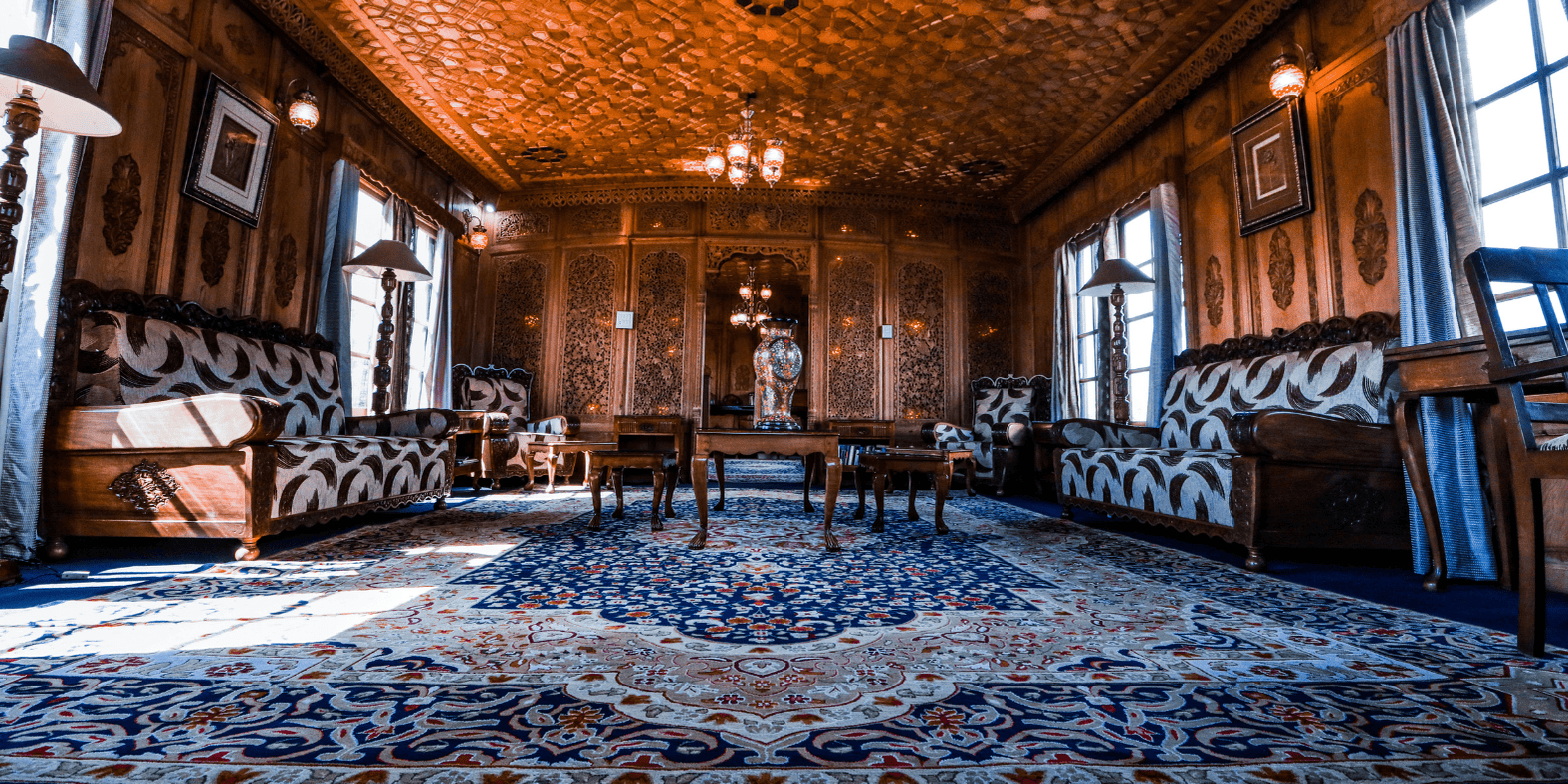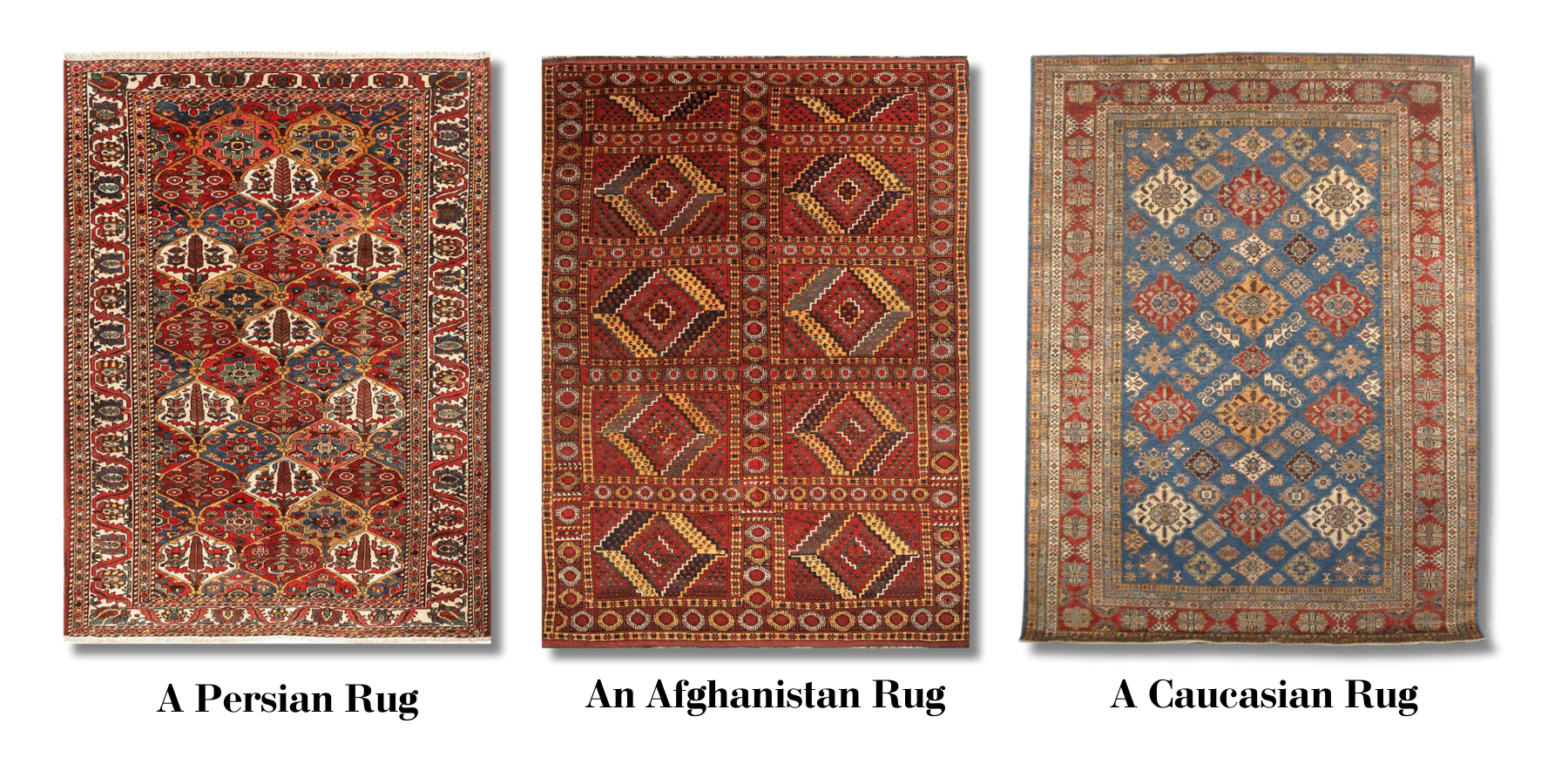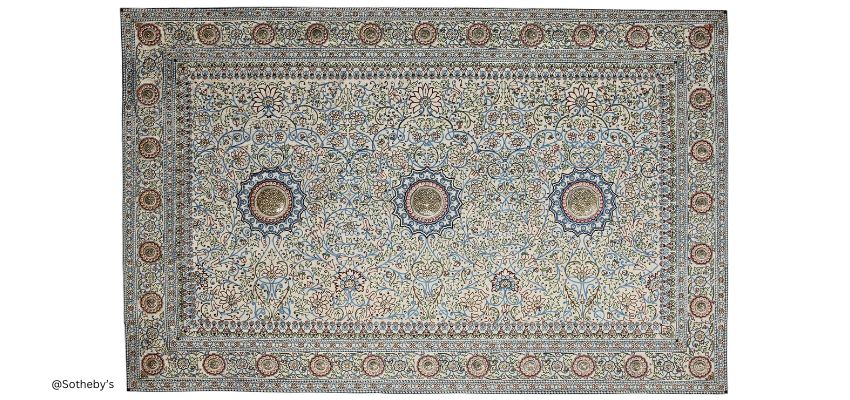Just as a connoisseur appraises a masterful painting, knowing the quality of a carpet involves a keen eye for detail and an appreciation for the subtleties that distinguish the extraordinary from the mundane.
This guide unveils the six factors that define carpet quality, providing you with the insights necessary to help you choose your carpet. Shall we dive in?
What Is A Good Quality Carpet?
 Buyers often see quality carpets as improving the space while providing durability and comfort.
Buyers often see quality carpets as improving the space while providing durability and comfort.
When considering what defines a good quality carpet, it's essential to understand the variety of perspectives and preferences buyers bring to the table. Carpet quality can vary based on several factors, including regional preferences, gender, and lifestyle needs.
From a buyer’s standpoint, quality carpets are often perceived as enhancing the aesthetic appeal of a space and offering durability and comfort.
For instance, homeowners in high-traffic areas or those with children and pets might prioritise stain resistance and ease of maintenance over sheer luxury. In regions like the Middle East which values traditional craftsmanship, buyers might look for hand-knotted rugs with intricate designs that reflect cultural heritage and artistry.
Carpet quality has been associated with the materials used and the construction method. We will discuss more in the “Material” section.
Men and women might also approach carpet quality differently.
While men might focus on practical aspects like durability and ease of cleaning, women might emphasise aesthetic qualities such as colour, texture, and how well the carpet complements the overall decor of the home. This isn't to say that these preferences are universal, but they do illustrate how diverse the concept of carpet quality can be.
Ultimately, the perception of a good quality carpet is subjective and can vary widely. It encompasses an intricate balance of aesthetic appeal, material, construction, and how well it meets the specific needs of the buyer.
How To Rate Carpet Quality
When it comes to assessing carpet quality from a professional collector’s standpoint, the criteria extend. Unlike casual buyers, collectors consider a tapestry of factors that reveal the true essence and value of a carpet. Through this lens, we can explore how professionals discern the finest carpets, elevating the evaluation process to an art form in itself.
Artistic
The artistic quality of a carpet is its ability to transcend mere flooring to a piece of art. The artistry of carpet making is evident in the designs, patterns, and craftsmanship that go into each piece.

The artistic quality of a carpet can significantly influence its perceived value.
Historically, carpets have been an essential element of interior design in many cultures. Persian rugs, for example, are renowned for their detailed patterns and rich colours, often telling stories through their intricate designs. These carpets also serve as cultural artifacts that hold historical significance and showcase traditional craftsmanship.
The artistic quality of a carpet can significantly influence its perceived value. This perception can vary greatly depending on regional preferences and cultural influences.
In Western markets, there is often a high appreciation for contemporary designs and innovative patterns that blend well with modern interiors. Conversely, in Eastern markets, traditional motifs and classical aesthetics might be more highly valued.
The customisation options available today have further enhanced the artistic appeal of carpets. Many manufacturers, including The Gallery Exclusive, offer bespoke services, allowing customers to create custom designs that reflect their personal tastes and interior decor needs.
Origin
The origin of a carpet often reflects the rich heritage associated with its place of creation. Different regions around the world are renowned for their unique styles, techniques, and materials.
Persian carpets are celebrated globally for their designs and craftsmanship. Originating from Iran, these carpets often feature detailed patterns and are made from high-quality wool or silk.
The city of Nain, although a relatively recent entrant into the carpet industry compared to cities like Isfahan and Kashan, has developed a reputation for producing carpets with exquisite, precise designs. The traditional blue and white colour schemes, sometimes accentuated with darker medallions, highlight the luxury and elegance of Nain carpets.

Different regions are renowned for their unique styles, techniques, and materials.
Similarly, Turkish carpets, often referred to as Anatolian carpets, are renowned for their patterns. These carpets are typically characterised by their geometric designs and vivid colours, which reflect their cultural and historical influences. Turkish knots, known for their tightness and strength, contribute to the longevity and robustness of these carpets.
In the Caucasus region, carpets are distinguished by their bold, geometric patterns and vibrant colours. Areas like Kazak, Karabach, and Shirvan are well-known for producing carpets that often feature stylised animal motifs and natural dyes. The durability and artistic value of these carpets make them highly sought after.
Additionally, the industrial evolution of carpet manufacturing has seen significant contributions from Western regions. The development of the power loom in the 19th century by Erastus Bigelow in the United States revolutionised carpet production, making high-quality carpets more accessible to the broader public.
This innovation, coupled with advancements in synthetic materials and dyeing techniques, has diversified the range of carpets available in the market today.
Historical
The historical significance of carpets is vast and rich, spanning centuries and reflecting diverse cultures. Carpets have been more than mere floor coverings; they have served as symbols of status, art, and cultural identity. The earliest evidence of carpet weaving dates back to ancient Persia, where the craft became an integral part of the region's culture and economy.
The Pearl Carpet of Baroda in the 19th century was auctioned by Sotheby's in 2009 and sold for $5.5 million.
The history of Persian carpets is particularly noteworthy. Persian rugs have been celebrated for over 2,500 years.
During the Safavid dynasty (1501–1736), Persian carpet weaving reached its pinnacle. This period saw the establishment of royal workshops in cities like Isfahan, where master weavers created some of the most exquisite and intricate designs ever seen. These carpets were not only prized locally but also became highly sought after in Europe and other parts of the world.
In Anatolia (modern-day Turkey), the Seljuk Turks in the 11th century introduced new designs and techniques to carpet weaving.
Fragments of Seljuk carpets discovered in mosques such as the Alaeddin Mosque in Konya provide valuable insights into the style and methods of the time. The Timurid Empire (1370–1507) also contributed to the evolution of carpet designs, with carpets often featuring intricate geometric patterns and Kufic script-inspired borders.
The Mongol invasions in the 13th century brought further changes. During the Ilkhanate period, Persian carpets began incorporating new motifs and techniques. By the time of the Timurid Empire, carpets had become integral to Persian culture, often depicted in miniature paintings from the era. This tradition of depicting carpets in art highlights their significance as symbols of luxury and refinement.
In modern times, the legacy of these historical carpets continues to influence contemporary designs. Collectors and historians value antique carpets for their beauty and for the stories they tell about the cultures and civilisations that produced them. Understanding the historical context of your carpet can thus provide deeper insights into its quality.
Investment / Collectible

A close-up look of an antique rug.
Collectible carpets, often antique, are highly prized for their craftsmanship, rarity, and the stories they tell. These carpets are pieces of art and history that have stood the test of time.
While some wear and tear is expected in antique carpets, those that have been well-maintained or restored to their original glory are highly prized.
Carpets with full pile, meaning the fibres are intact and not worn down, are especially valuable. Collectors often seek carpets that have retained their original dyes and have not been subjected to extensive repairs that alter their authenticity.
For novice collectors, starting a carpet collection can be both exciting and daunting. It's often recommended to begin with smaller, more affordable pieces that still offer high artistic value. Over time, as collectors become more familiar with different styles and periods, they can invest in larger and rarer pieces.
Many collectors find that their passion for carpets grows into a rewarding and lifelong pursuit, with each new acquisition adding depth and richness to their collection.
Material
The material not only affects the carpet's appearance and feel but also its durability, maintenance requirements, and overall lifespan.
Nylon is a popular material for carpets due to its durability, resilience, and ability to maintain its shape and colour over time. It's highly resistant to wear and tear, mildew, mould, and rot, making it an excellent choice for high-traffic areas. Additionally, nylon carpets can last between 12 to 15 years.
Polypropylene is another synthetic fibre known for its strength and affordability. While it is highly stain-resistant, it is less soil-resistant and can look very dirty in high-traffic areas. Polypropylene is commonly used for commercial carpets and is particularly popular in areas that need easy manoeuvrability, such as spaces designed for wheelchair accessibility.
Polyester carpets are known for their vibrant colours and non-allergic properties. They are often made from recycled materials. However, polyester is not very resilient and tends to crush easily underfoot, limiting its lifespan to around five years in high-traffic areas. This makes it suitable for low-traffic rooms or temporary installations.
Wool, a natural fibre, is prized for its softness, luxury, and eco-friendliness. Wool carpets offer excellent insulation, are fire-resistant, and can last for many years if properly maintained.
However, wool is susceptible to mould, mildew, and beetle infestations, and it can be quite expensive to purchase and maintain. Wool blends, such as an 80% wool and 20% nylon combination, provide a more affordable and durable alternative while still offering many of wool's benefits.
Utility
A high-quality carpet should offer practical benefits alongside aesthetic appeal. The following aspects are crucial in determining the utility of a carpet:
- Durability: High-quality carpets are designed to withstand significant foot traffic, resisting wear and tear over extended periods. A durable carpet maintains its appearance and structural integrity, ensuring that it remains a valuable addition to your home or office for years to come.
- Maintenance and Ease of Cleaning: Quality carpets should offer resistance to stains and spills, simplifying the cleaning process. Advanced treatments and innovative fibre technologies have led to the development of carpets that repel dirt and prevent stains from setting in, thereby reducing the effort and frequency of cleaning required.
- Comfort: This includes the softness of the fibres underfoot and the carpet’s ability to provide thermal insulation. High-quality carpets often have a dense pile and a well-constructed backing, contributing to a plush feel and superior insulation properties. This enhances the comfort of the living space and contributes to energy efficiency by retaining warmth in cooler months.
- Acoustic Benefits: An often-overlooked aspect of a carpet’s utility is its acoustic properties. Quality carpets can significantly reduce noise levels within a room by absorbing sound. This is particularly beneficial in multi-story homes or office environments.
- Adaptability: High-quality carpets are versatile and available in a range of colours, patterns, and textures, ensuring they can complement any interior design scheme. Furthermore, they should be suitable for various rooms, from high-traffic areas like hallways and living rooms to more intimate settings like bedrooms.
- Safety: High-quality carpets should be manufactured using hypoallergenic materials that do not emit harmful chemicals, thereby ensuring indoor air quality is not compromised. Additionally, they should provide a non-slip surface to reduce the risk of accidents, especially in homes with young children or elderly residents.
Frequently Asked Questions
What Is A Good Quality Carpet Made Of?
A good quality carpet is typically made of durable materials such as nylon or wool. Nylon is known for its resilience and stain resistance, while wool offers natural luxury and insulation. Polyester and polypropylene are also popular options.
How Much Is Quality Carpet?
High-end woolen carpets are some of the most expensive carpets in the world, such as antique Persian rugs, that can fetch prices upwards of $30,000 to $50,000 or more, depending on their age, condition, and craftsmanship.
Is It OK to Have Different Carpets In Different Rooms?
Yes, having different carpets in different rooms is acceptable. It allows you to choose the best type of carpet for each room's specific needs and aesthetics, such as durable nylon for high-traffic areas and soft wool for bedrooms.
In What Rooms Is Carpeting A Good Choice?
Carpeting is a good choice for bedrooms, living rooms, family rooms, and home offices due to its comfort, warmth, and sound insulation properties. It provides a cosy atmosphere and reduces noise in these spaces.
How To Check Carpet Quality?
Check carpet quality by inspecting its fibres, density, and backing. High-quality carpets will have tightly twisted fibres, a high stitch count, and a strong backing material. Additionally, asking for a sample to test for stain resistance and durability can help you evaluate its quality.





